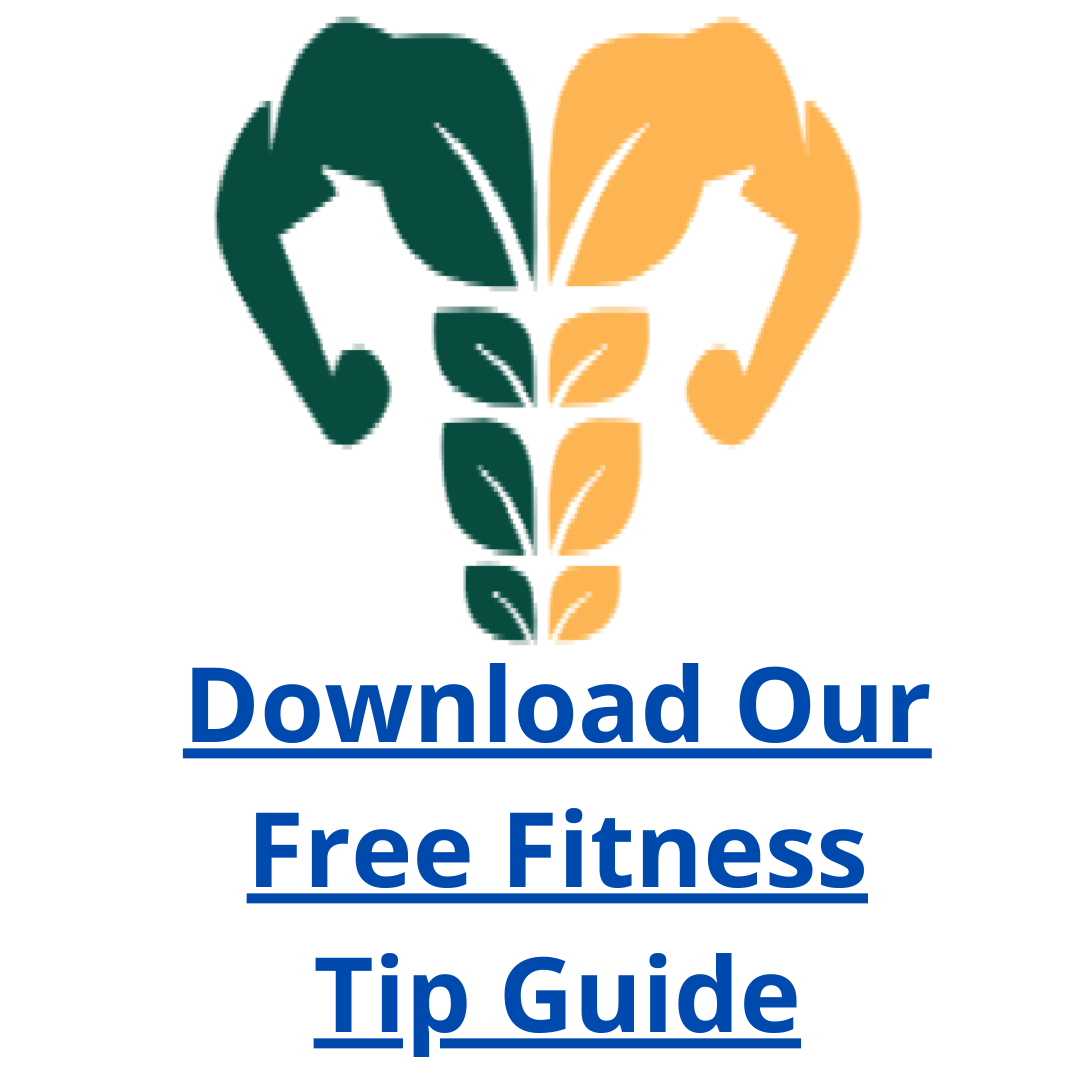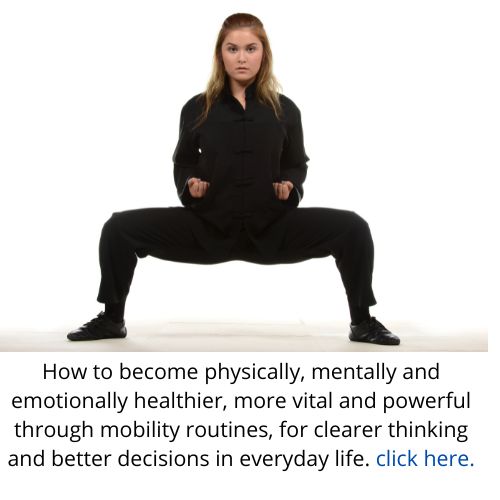Mastering the Horse Stance Squat: Techniques and Benefits
Introduction
Picture this: you’re in the gym, surrounded by the familiar clinks of weights and the rhythmic hum of cardio machines. You’re midway through your regular workout routine, sweat glistening, muscles working, and suddenly, amidst the fitness buzz, you catch wind of a whispered secret—a murmured mention of a squat that’s not just any squat. It’s a game-changer, a shift from the ordinary, a dynamic move that promises to redefine your lower body strength and overall stability. Enter the Horse Stance Squat.
Now, this isn’t your run-of-the-mill squat. It’s not about the conventional up-and-down motion; it’s about embracing a wider stance, engaging muscles you might not even know existed, and mastering a movement that originated from the world of martial arts. The Horse Stance Squat is a symphony of controlled movements, demanding not only strength but a heightened sense of balance and stability.
In this article, we’re not just unraveling the intricacies of the Horse Stance Squat; we’re delving into the art of mastering it. We’re exploring the techniques that make it a powerhouse for your lower body and uncovering the multitude of benefits it brings to your fitness table. So, whether you’re a fitness enthusiast searching for a new challenge or a curious beginner looking to spice up your workout routine, saddle up, because we’re about to embark on a journey to transform your squat game.
The Horse Stance Squat isn’t just an exercise; it’s a paradigm shift in how we approach lower body workouts. It’s about breaking free from the confines of the ordinary, stepping into a wider, more dynamic space, and discovering the holistic strength that lies within. So, let’s dive deep into the world of Horse Stance Squats, where every squat is not just a repetition but a step towards a stronger, more balanced you.
Table of Contents
What is the Horse Stance Squat?
The Horse Stance Squat is often considered a gem, in the world of fitness surpassing the limitations of a squat. It originates from arts, particularly disciplines like kung fu. Offers a unique approach to strengthening and stabilizing the lower body. Unlike squats this variation requires a stance that challenges your comfort zone. It engages not the muscle groups but also targets often neglected areas such as inner thighs, hamstrings and core.
Understanding the Stance; The key aspect of the Horse Stance Squat lies in its foundation—the stance itself. Imagine assuming a position than your squat with feet placed beyond shoulder width apart and toes slightly pointing outward. This broader base not tests your balance. Also activates various muscles simultaneously transforming a simple squat into a comprehensive full body exercise.
Origins and Unique Features; Rooted in martial arts traditions the Horse Stance Squat stands out as a movement that goes beyond the up and, down motion of traditional squats. Martial artists employ this technique to enhance their body strength, balance and agility.
What makes it stand out is how deliberately it incorporates a stance aligning with the principles of arts that emphasize the importance of maintaining a stable and grounded position, for effective strikes and defensive maneuvers.
Engaging Multiple Muscle Groups; Unlike a squat that mainly targets the quadriceps and glutes the Horse Stance Squat offers a comprehensive workout by involving a wider range of muscles. The wider stance challenges and activates the thighs in ways that a narrower stance cannot. Additionally it brings the hamstrings and core muscles into play creating a symphony of controlled movements.
The Choreography of Controlled Movements; Imagine performing the Horse Stance Squat as if you were participating in a dance with gravity. As you descend into the position consciously widening your stance challenges your thighs while engaging your core and hamstrings to stabilize your movement. Rising back up becomes an integrated effort involving these muscle groups resulting in an exercise that not builds strength but also enhances coordination and control.
In essence the Horse Stance Squat goes beyond squats by combining martial arts principles with fitness benefits. It is more than an exercise; it is a calculated movement that transforms what may seem like a simple squat, into an impactful lower body workout.
As we explore further into perfecting this technique we will discover the details of its approach deep muscle engagement and overall activation. This will lead to a fitness journey that goes beyond the expectations.
Techniques for Mastering the Horse Stance Squat
Stance and Foot Positioning
The foundation of the Horse Stance Squat lies in its unique stance. Imagine standing with your feet wider than shoulder-width, toes pointing slightly outward. This wider base creates a stable platform, allowing you to delve deeper into the squat while engaging a broader spectrum of muscles. The positioning of your knees is crucial; they should align with your toes, preventing inward collapse and ensuring a safe and effective movement.
Now, let’s break it down further. As you adopt the wider stance, distribute your body weight evenly between both legs. This not only establishes balance but also facilitates a controlled descent into the squat. Visualize your feet firmly planted on the ground, forming a solid connection with the earth.
Table 1: Horse Stance Squat – Stance and Foot Positioning
| Aspect | Guidelines |
| Stance Width | Wider than shoulder-width |
| Toes Positioning | Pointed slightly outward |
| Knee Alignment | Aligned with the toes, avoiding inward collapse |
Core Engagement
A strong core is your best ally in mastering the Horse Stance Squat. Think of your core as the anchor, providing stability throughout the movement. As you descend into the squat, consciously engage your core muscles. Imagine pulling your belly button toward your spine, creating a solid midsection. This engagement not only safeguards your lower back but also ensures proper form and control.
Maintaining core activation isn’t a one-time deal—it’s a continuous effort. From the initial descent to the triumphant ascent, your core should remain engaged. This not only fortifies your center but also enhances the effectiveness of the squat.
Table 2: Horse Stance Squat – Core Engagement
| Aspect | Guidelines |
| Core Activation | Maintain constant engagement throughout the movement |
| Back Alignment | Keep your back straight, avoiding hunching or arching |
Arm Placement
While your lower body takes the spotlight, don’t underestimate the role of your arms in achieving balance and coordination. The beauty of the Horse Stance Squat lies in its adaptability; you have the freedom to experiment with various arm positions.
For starters, try extending your arms straight in front of you. This not only aids in balance but also adds a dynamic element to the squat. Another option is to clasp your hands together in front of your chest, focusing on centering your energy. If you’re feeling adventurous, place your hands on your hips for an extra challenge. The key is to find an arm position that complements your stance and contributes to the overall fluidity of the movement.
Table 3: Horse Stance Squat – Arm Placement
| Aspect | Guidelines |
| Arm Options | Outstretched, clasped, or on hips for variation |
| Upper Body Movement | Balance upper body movement with lower body stability |
By mastering these fundamental techniques—nailing the stance, engaging the core, and experimenting with arm positions—you pave the way for a seamless and effective Horse Stance Squat. Remember, the journey to mastery is as rewarding as the destination, so take your time, embrace the learning process, and enjoy the transformative benefits of this powerful squat variation.
Benefits of the Horse Stance Squat
Increased Muscle Engagement
The conventional squat might be a staple in leg workouts, but the Horse Stance Squat takes it up a notch. This dynamic exercise engages not only your quadriceps but also brings the inner thighs, hamstrings, and glutes into the spotlight simultaneously. As you descend into the squat, the wider stance challenges a broader range of muscles, turning every repetition into a holistic lower body workout. The symphony of muscle engagement sets the Horse Stance Squat apart, making it a powerhouse for building comprehensive leg strength.
Table 4: Horse Stance Squat – Muscles Engaged
| Muscle Group | Engagement |
| Quadriceps | High engagement during the ascent phase |
| Hamstrings | Continuous activation throughout the movement |
| Inner Thighs | Targeted due to the wider stance |
| Glutes | Intensified activation during the squat |
Improved Flexibility and Balance
Flexibility and balance often take a back seat in traditional strength training. However, the Horse Stance Squat insists on their inclusion in the fitness narrative. The wider range of motion required by this squat translates into increased hip and ankle flexibility. The unique positioning of your feet challenges your ankles to adapt, promoting flexibility in this often-neglected area. As you gracefully navigate through the squat, your body learns to balance the load, fostering overall stability and coordination.
Table 5: Horse Stance Squat – Flexibility and Balance
| Aspect | Impact |
| Hip Flexibility | Increased due to the wider range of motion |
| Ankle Flexibility | Enhanced by the unique positioning of the feet |
| Overall Body Balance | Improved through the demands of the wider stance |
Injury Prevention
Beyond the aesthetics and raw strength, the Horse Stance Squat emerges as a champion in injury prevention. By distributing the load across multiple muscle groups, it significantly reduces strain on specific areas prone to injury during traditional squats. The even distribution of the load translates to decreased pressure on the knees, making it a friendlier option for individuals with knee concerns. Additionally, the engagement of supporting muscles surrounding the lower back provides an added layer of support, minimizing the risk of strain or injury in this critical region.
Table 6: Horse Stance Squat – Injury Prevention
| Aspect | Impact |
| Knee Strain Reduction | Even distribution of load reduces pressure on the knees |
| Lower Back Support | Strengthening supporting muscles for enhanced stability |
The holistic approach of the Horse Stance Squat, encompassing muscle engagement, flexibility, and injury prevention, positions it as a versatile and efficient exercise. It not only targets the aesthetic goals of a sculpted lower body but also promotes functional strength and longevity in your fitness journey. Whether you’re an athlete looking to enhance performance or someone seeking a comprehensive leg workout, the Horse Stance Squat is a valuable addition to your repertoire. So, let’s delve further into the intricacies of executing this powerful squat with finesse.
Common Mistakes and How to Avoid Them
Leaning too Far Forward or Backward
Maintaining proper form is crucial. Leaning excessively in any direction compromises the effectiveness of the squat and puts unnecessary strain on specific muscle groups.
Table 7: Common Mistakes – Leaning and Corrections
| Mistake | Impact |
| Forward Lean | Strain on lower back and reduced engagement of quads |
| Backward Lean | Increased pressure on knees and hamstrings |
Neglecting Proper Breathing Techniques
Breathing isn’t just an afterthought; it’s integral to your squat’s success. Neglecting controlled breathing disrupts your rhythm and diminishes the effectiveness of the exercise.
Table 8: Common Mistakes – Breathing and Corrections
| Mistake | Impact |
| Shallow Breathing | Reduced oxygen flow, leading to premature fatigue |
| Unsynced Breathing | Disrupted movement pattern and compromised stability |
Incorporating Horse Stance Squats into Your Workout Routine
Whether you’re a beginner or a seasoned gym-goer, the Horse Stance Squat has a place in your routine. Start slow, gradually incorporating it into your leg day, and witness the transformation in your lower body strength.
Table 9: Workout Integration – Beginner to Advanced
| Level | Recommendations |
| Beginner | 2-3 sets, 8-10 reps with a focus on form |
| Intermediate | 3-4 sets, 10-12 reps, experimenting with arm positions |
| Advanced | 4-5 sets, 12-15 reps, exploring variations for intensity |
Conclusion
In the realm of fitness, where exercises come and go, the Horse Stance Squat stands as a unique and transformative gem. As we conclude our exploration into mastering this dynamic squat, let’s recap the journey. We’ve uncovered the techniques, dived into the benefits, and discussed the common pitfalls. But beyond the technicalities, the Horse Stance Squat is an invitation—a call to embrace the full spectrum of your fitness journey.
So, what sets this squat apart? It’s more than a series of movements; it’s an opportunity to challenge yourself, to break free from the confines of routine, and to discover the incredible capabilities of your body. The wider stance, the nuanced engagement of muscles, and the demand for balance create a holistic experience—one that extends beyond the physical and delves into the realms of mental resilience and self-discovery.
As you embark on incorporating Horse Stance Squats into your routine, remember this: it’s not just about building stronger muscles; it’s about building a stronger you. The Horse Stance Squat is a canvas where you paint your progress, one squat at a time. It’s a journey where imperfections are not flaws but rather the brushstrokes that make your fitness story uniquely yours.
So, saddle up, adopt the stance, and let the Horse Stance Squat be more than an exercise—it’s a celebration of your commitment to health, strength, and personal growth. May your squats be deep, your balance unwavering, and your journey filled with the joy of progress. Happy squatting!
If you liked this chek this out

Stay Super Fit, our project dedicated to Fitness and Health, offers comprehensive resources on how you can maximize the Health Benefits of Being Physically Fit. Embark on this transformative journey with us as we guide you every step of the way.
- Sustainable Fitness
- Transform Your Body and Mind with Yoga and Meditation
- Understanding the Mental Health Awareness Ribbon: Significance and Impact
- 8 Workouts to Melt Belly Fat Away
- The Art of Personalized Nutrition: Tailoring Your Diet to Your Needs
- The Intersection of Food and Lifestyle: A Holistic Approach
- Mastering the Horse Stance Squat: Techniques and Benefits
- Unleashing the Potential of Creatine; Your Comprehensive Guide, to Maximizing Workouts
- Staying Motivated
- Unlocking the Power of Creatine Supplements: Unveiling Before and After Results
- Gym Workout Routines For Beginners
- Endorphines
- Exercise For Fitness & Weight Loss
- How To Gein Weight For Skinny Guys
- How To Stay In Shape With A Broken Ankle
- Beginner Leg Workouts At Home
- Triceps Workout at Home Without Equipment
- The Horse Stance
- Leg Workout Program For Mass
- Visceral Fat Real Image
- Best Aerobic Exercises to Lose Weight and Get Fit
- Sunny Health And Fitness (SF-T4400) Treadmill Review 2024: A Great Walking Machine
- How Women Can Lose Belly Fat in 7-10 Days
- Shedding Pounds: Best Exercise Machines To Lose Belly Fat
- Figure 8 Fitness Review: Transforming Your Workouts
- Best Morning Stretches for Women to Energize Your Day
- Maximizing Health Benefits of Being Physically Fit





